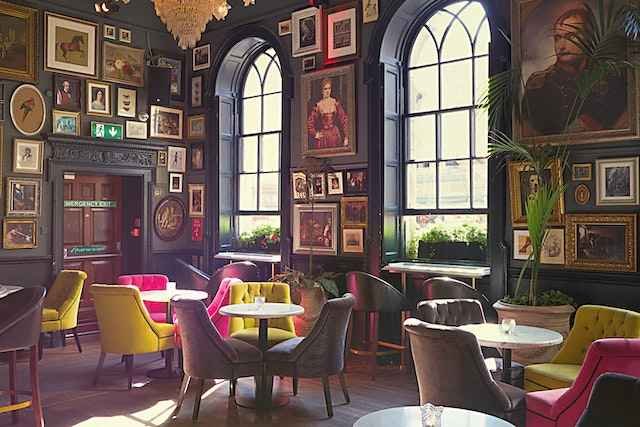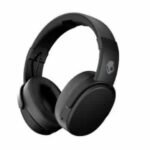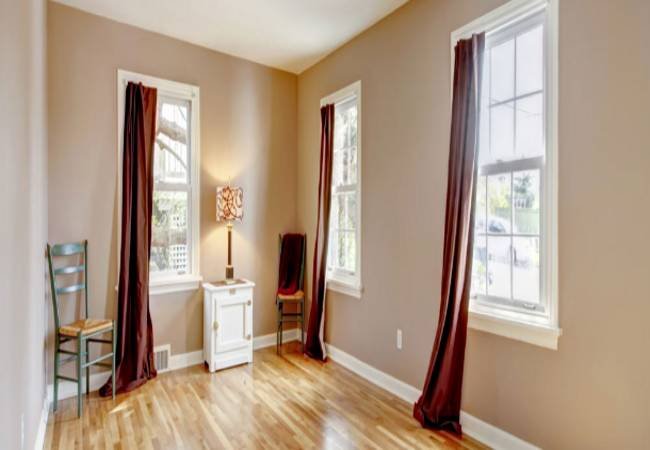Restaurant table design is an important consideration when it comes to creating a successful dining experience. Durability and maintenance play a key role in how your restaurant looks, feels, and functions. If you searching for tables for restaurant that you have or replacing existing restaurant tables, you’ll want to make sure that the tables are both durable and easy to maintain. In this article, we’ll discuss the importance of durability and maintenance in restaurant table design and how to find the best options for your needs.
1. Overview Of Table Durability
Tables need to be able to withstand the wear and tear of daily use and regular cleanings, while still looking attractive. That’s why restaurants must invest in tables that are built with quality materials that won’t easily break or become discolored over time.
When investing in durable tables, restaurants should also take into account how much maintenance is required. Tables made out of wood and metal can require more frequent upkeep than those made out of more modern materials. For example, stainless steel tables may need more frequent oiling and polishing than other materials like glass or plastic. Restaurants should also consider whether their chosen material will need special cleaning products for spots or stains and if any protective coating would be necessary in order to keep their tables looking shiny and new for years to come.
Ultimately, a restaurant’s choice of table material should factor in both durability; and maintenance requirements so that they can ensure their tables look great for as long as possible. Investing in quality materials from the start means fewer repairs down the line; which can save time and money on repairs or replacements over time. Making sure the right materials chosen for a restaurant’s table design will help ensure that its guests have a pleasant dining experience every time they visit.
2. Differences In Table Materials
Table materials play a major role in determining the durability and maintenance needs of restaurant tables. Wooden, metal, and plastic are all popular choices for commercial use, each with its own unique advantages and drawbacks. In this section, we’ll explore the differences between these materials so you can make an informed decision when designing your restaurant’s tables.
Wood is a classic choice for restaurant tables that offers a warm, inviting atmosphere. It’s also quite strong and can be refinished to look brand new again. On the downside, wood requires frequent sealing or waxing as well as occasional refinishing to maintain its original beauty and protect it from wear and tear.
Metal is another great choice for restaurants looking for durable surfaces that don’t require a lot of maintenance. Metal tables are often stronger than wooden ones and don’t need to be refinished or sealed like wood does. The downside is that metal tables can get cold during winter months and may scratch more easily than other materials.
Plastic has become increasingly popular due to its affordability and low-maintenance requirements. Plastic is lightweight yet strong enough to take on heavy use without needing any refinishing or sealing like wood or metal do. Plus, it comes in an array of colors so you can find just the right one to fit your decorating scheme. The downside is that plastic may not last as long as other materials; so it’s important to get high-quality pieces if you plan on using them for a long time.
3. Factors Impacting Table Durability
It’s essential for a restaurant table to stand the test of time; and remain in good condition even after years of regular use. This is why it’s important to consider various factors that can affect a table’s durability when choosing its materials and maintenance needs.
So what are some of these factors? Well, one of the biggest is the material used for the table. Different materials have different levels of durability; so it’s important to choose one that will provide enough strength and sturdiness for your tables. Wood, metal, stone, and plastic all popular materials used in restaurant table design; each with its own pros and cons when it comes to durability.
Aside from the material itself, other considerations should be taken into account as well such as how often tables will be used or moved around. Tables that are regularly cleaned and maintained tend to last longer than those that aren’t cared for as much. Additionally, tables with well-designed legs can also help increase their longevity by providing more stability over time.
Selecting the right materials and making sure they’re properly taken care of can go a long way towards ensuring your restaurant tables remain durable for years to come. Knowing which factors impact a table’s durability helps you make better decisions when it comes to choosing appropriate materials and maintenance needs for your restaurant tables.
4. Benefits Of Durable Tables
It’s clear that having durable tables in a restaurant is essential. Durability isn’t just about the initial cost of buying the tables; but also about the long term savings of maintaining them. So, what benefits come with investing in durable tables?
The first benefit is that they last longer. Tables made from high quality materials are more resistant to wear; and tear caused by regular use, meaning they don’t need replacing as often as cheaper options. In addition to this, they require less maintenance over their lifetime. This means less time and money spent on cleaning and repairs; so you can focus on other aspects of your restaurant.
Another advantage of investing in durable tables is that it can improve customer experience. People expect furniture in restaurants to be comfortable and attractive; so opting for better quality tables can make all the difference when it comes to creating an inviting atmosphere. Durable furniture also makes it easier for staff members to move between tables quickly and efficiently; which helps create a better service experience overall.
5. Maintenance Tips For Restaurant Tables
When it comes to restaurant table design, durability is a major factor. However, the tables must also be maintained properly in order to ensure that they last for a long time. This brings us to the topic of maintenance tips for restaurant tables.
First, it’s important to make sure that the tables are wiped down after each use. This will prevent sticky residues and dirt from accumulating on their surface and will help them maintain their original shine. Additionally, regular polishing with furniture polish can help preserve their finish and increase their lifespan.
It’s also important to check the screws and other fixings on the table regularly. Any loose ones should be tightened as soon as possible since this can significantly boost the stability of the table; and help prevent accidents or damage due to wobbling or tipping over. If any parts need replacing due to wear and tear, these should be replaced right away.
Lastly, it’s always wise to invest in quality materials for your restaurant tables; high-quality wood or metal is usually a safe bet when it comes to durability and longevity. Doing so will ensure that your tables can withstand heavy usage without much maintenance; or repairs being needed down the line. Furthermore, investing in quality materials will also give your establishment a more polished look overall.
Conclusion
The importance of durability and maintenance in restaurant table design cannot be overstated. As a restaurant owner, you have to make sure that your tables are up-to-date; and able to withstand the wear and tear of daily use. It’s essential to invest in quality products that will last;; as well as making sure to clean and maintain them regularly. Seating arrangements should be thoughtfully considered so that your customers can enjoy their dining experience without any issues arising from overcrowding or inappropriate furniture placements.




